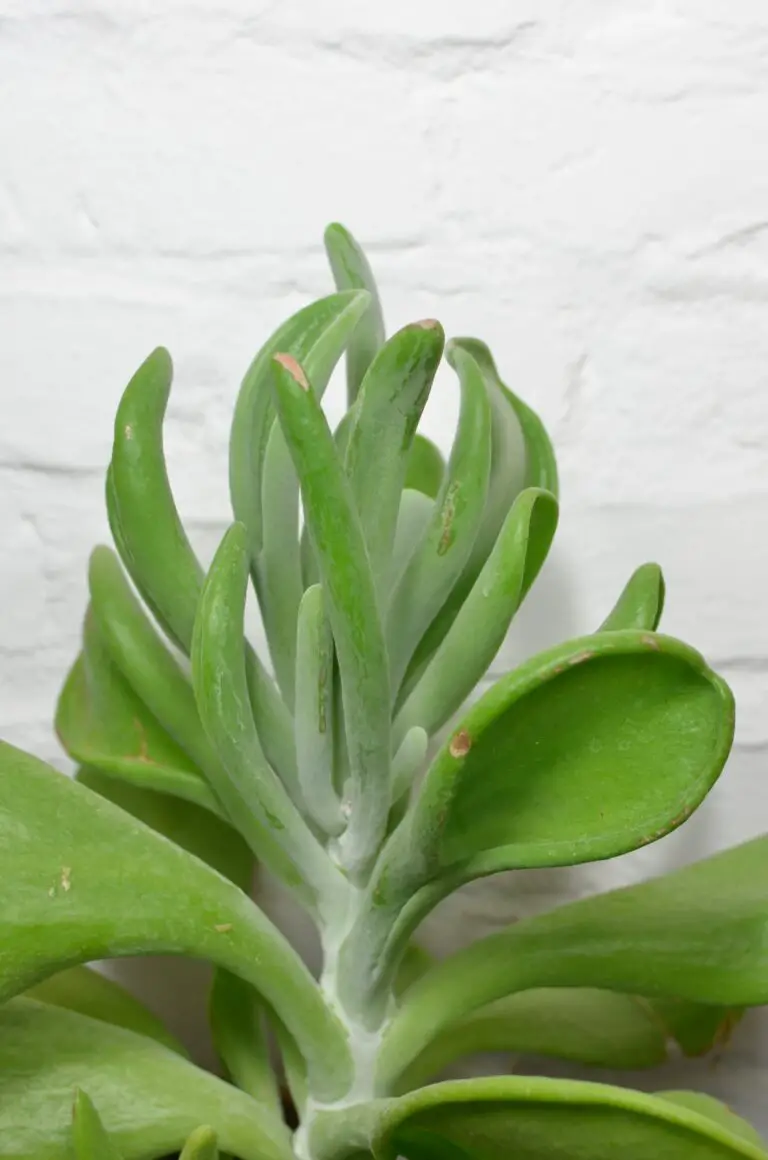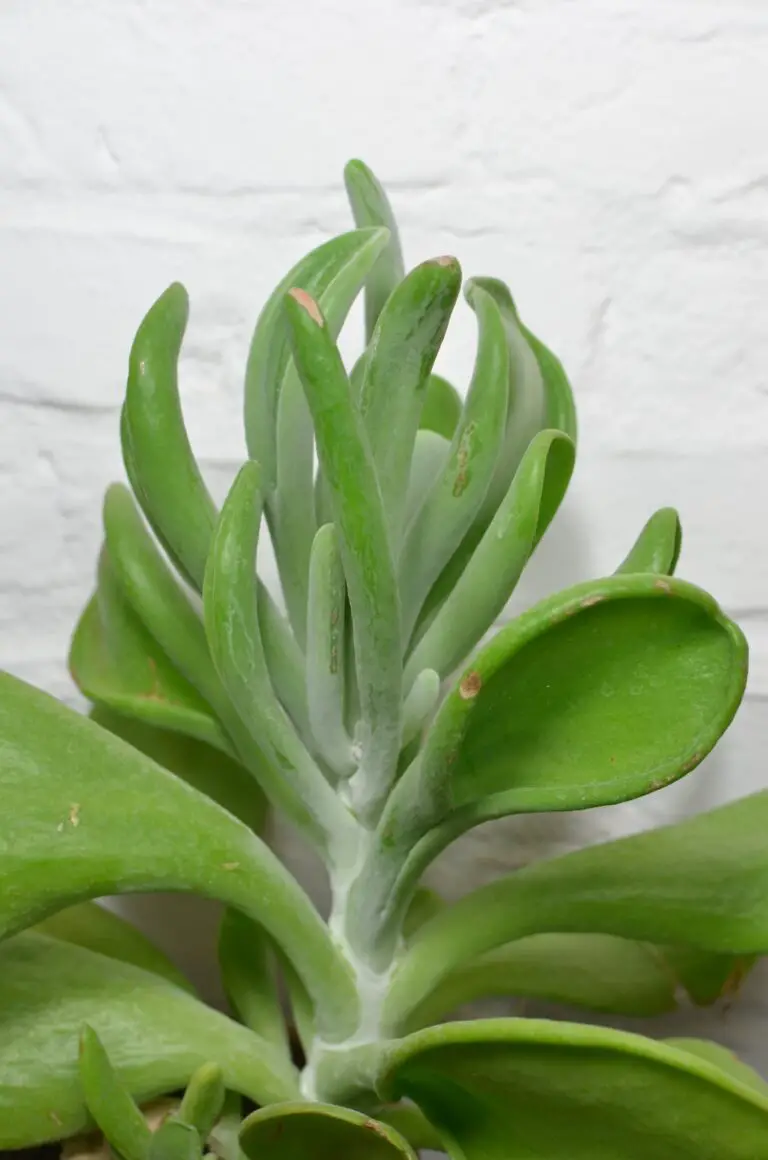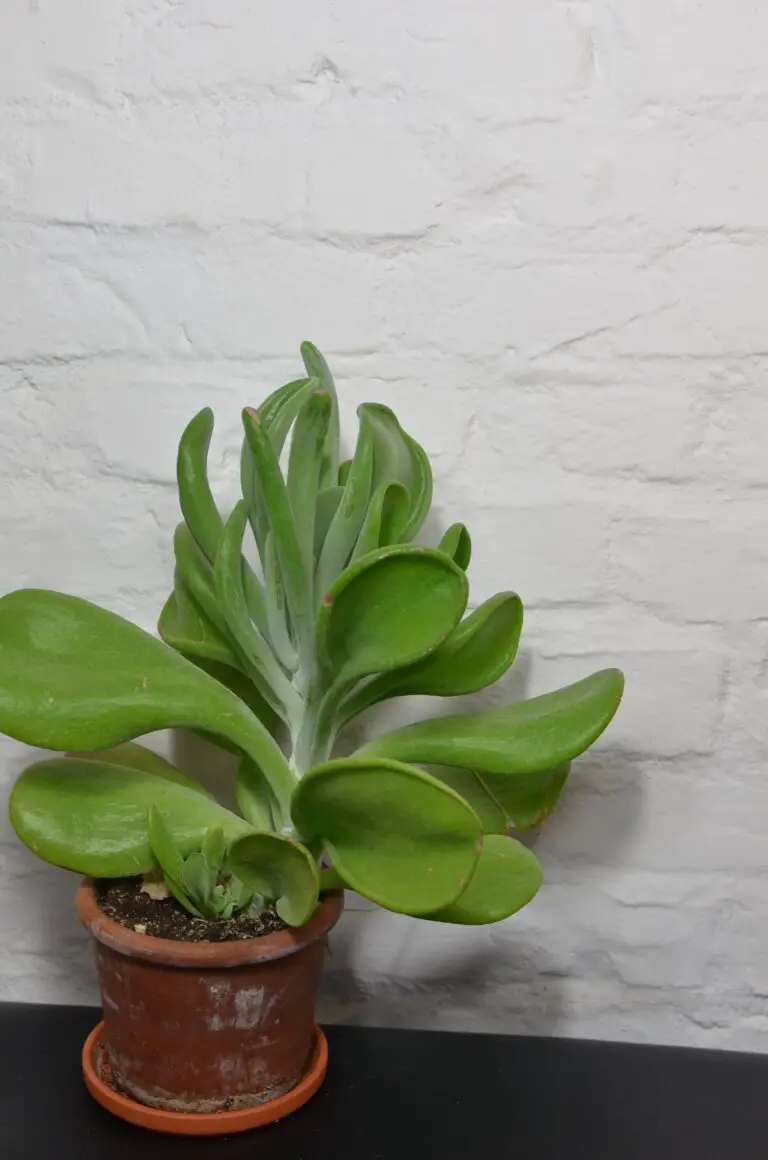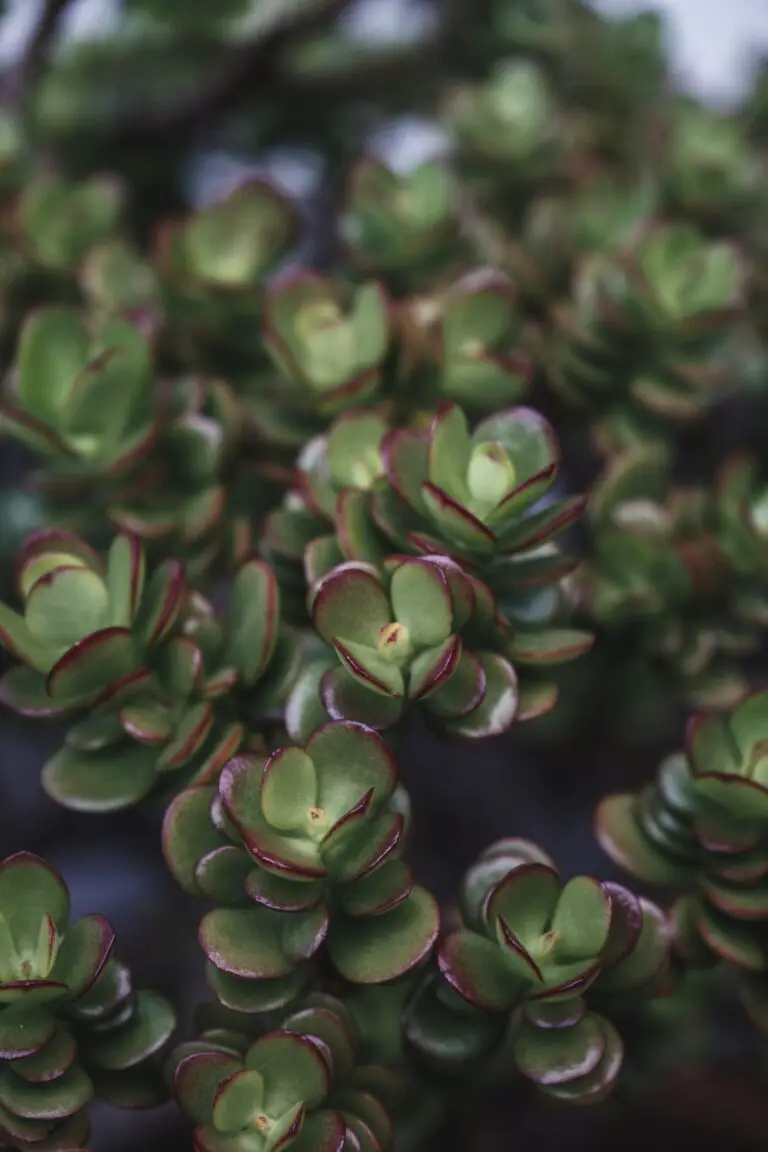An Introduction to Crassula Plant Care
Welcome to the captivating world of Crassula, the beloved plant genus that’s made a name for itself in the realm of succulents. Known for their ease of care and their ability to thrive in a variety of environments, Crassulas have become the go-to greenery for both novice plant owners and seasoned gardeners alike. But what is it about these plump-leafed beauties that garners such adoration? Let’s dive in!
Imagine a plant that forgives you if you’re the forgetful type—this is the essence of Crassula. They’re the understanding friends in your plant family, adaptable to your busy schedule, and quite content with occasional attention. However, understanding the basics of Crassula care can transform your succulent experience from casual to extraordinary. A thorough guide on succulent care illuminates the path to flourishing Crassulas right in your living space.
In their natural habitat, Crassulas soak up the sun’s rays and take in the rare rainfall with open arms. Emulating this in your home isn’t as tricky as it might sound. The keyword here is balance—knowing when to water, how much to water, and how often. It’s less about sticking to a rigid schedule and more about observing and responding to your Crassula’s needs. A happy Crassula is one that lives in harmony with its environment.
To give you a visual aid, we’ve found the perfect clip that brings Crassula care to life. Let’s watch how pros handle their Crassula plants, from quenching their thirst to preventing those all-too-common leaf burns. It’s time for some practical insights!
One core element of Crassula care is their love-hate relationship with water. The key term here is ‘how often,’ as overzealous watering leads to the dreaded fate many succulents face: root rot. On the flip side, under-watering can leave your plants dehydrated and distressed. There’s a sweet spot where Crassulas thrive, and it often means watering only when the soil has completely dried out. If you’re curious to learn how this looks for different succulent species in a detailed manner, our comprehensive succulent care guide is a valuable resource.
Every Crassula whisperer knows that the size of the container, the type of soil used, and the ambient humidity and temperature all play their parts in the watering equation. Armed with this knowledge, you will not only meet the basic needs of your Crassulas but will also craft an ideal habitat for these resilient yet delicate plants.
As we continue to explore the secrets of perfecting our Crassula care routine, remember that these hardy succulents are more than just a pretty leaf. They’re a testament to the beauty that comes from understanding and aligning with the natural world. So, let’s keep this conversation about these fascinating plants flowing, as there’s always more to learn and more Crassula wisdom to share.
Discovering the Ideal Watering Frequency for Crassula
Imagine, if you will, a lush Crassula soaking up the sun on a Mediterranean balcony or basking in the dappled light of a humid greenhouse. These idyllic scenarios paint a picture of the versatility of Crassula, a beloved succulent known for its easy-going nature. However, even the most laid-back succulents, like our plump-leafed friends, have watering needs that, when met with precision, turn a mere plant into a vibrant, living sculpture.

When it comes to quenching the thirst of your Crassula, consider the climate it resides in. The arid embrace of a California summer might beckon a hearty drink each week, while the moist breath of a British winter could mean monthly water at most. As the seasons shift, so too should your watering can’s schedule. During the warmer months, Crassula’s soil should dry completely between sips, mimicking the desert’s sporadic downpours.
Indoors, the situation gets a bit more nuanced. Your plant’s pot size, the porousness of the soil, and even the airflow of the room play pivotal roles. A Crassula cohabiting with a parched radiator or a vigorous fan will need more frequent visits from the watering fairy than one chilling next to a cool, north-facing window. Here are some enlightened succulent care insights to help you read your plant’s thirst cues like an open book!
Remember, every Crassula is a unique individual. Some might guzzle water like there’s no tomorrow, while others sip as daintily as a cat at a saucer of milk. By observing your succulent’s response to watering, you’ll become fluent in its silent language, ensuring those fleshy leaves stay plump and the roots, oh-so-happy. To kick-start this splendid green journey, infuse your succulent care routine with patience and observatory prowess. Your Crassula will be silently applauding your efforts.
Recognizing Signs of Thirst in Your Crassula
Like a desert wanderer dreaming of an oasis, your Crassula signals when it’s parched and in need of hydration. You don’t need to be a succulent psychic to interpret these signs; with a bit of guidance, you’ll be fluent in Crassula thirst language. Let’s decrypt the subtle, and sometimes not-so-subtle, visual cues that scream (or politely suggest) it’s time for a water feast.
Leaf Texture: The Telltale Tactile Tip-off
Run your fingers gently over the leaves. Are they firm and plumped up like a juicy grape? Or do they have the softness of an overripe peach? When those plump, rubbery leaves start feeling a tad flimsy, your green buddy is telling you it’s time to bring on the water works. Consider the leaf texture the plant’s natural thirst indicator, shifting from perky to droopy when the need arises.
Color Code: Decoding the Hue Clues
Lush greens and vibrant shades are the hallmarks of a well-hydrated Crassula. But when your plant starts putting on a muted, dull, or even yellow costume, it’s not trying to celebrate autumn; it’s a visual SOS. Think of it as your Crassula’s own bat signal – but instead of calling for a caped crusader, it’s beckoning for a watering can hero.
Imagine you’ve neglected a dinner guest’s glass—eventually, they’ll give you ‘the look.’ That’s what your Crassula’s doing with its color change. It’s its way of eyeing you down, hoping you’ll catch the hint and quench its thirst. No need for guilt trips, though; just a splash of water, and it’s back to party-in-the-pot mode!

Detecting these signs is like playing plant detective, where every clue counts. Keep an eye out, touch, and engage with your Crassula regularly. This way, you’ll spot the signs of thirst before they become desperate cries for help. And with your newfound watering wisdom, your Crassula will thrive, making every drop count in your perfected succulent care routine.
Mastering the Watering Technique for Healthy Crassula
Unlock the secret to robust Crassula plants with the right watering approach—it’s like finding the perfect rhythm in a dance! When it comes to Crassula, it’s all about timing and technique. These succulent beauties thrive on a ‘less is more’ mantra; imagine you’re walking a fine line between drought and deluge. Your mission is to follow the clues your plant gives you, responding with a gentle shower or a brief pause in watering. But be warned: the road is fraught with potential missteps.

Envision yourself in the shoes of a seasoned gardener who knows that every drop of water must have purpose. For instance, picture Clara, a gardening enthusiast. She diligently checks the topsoil of her cherished Crassula ovata before deciding to water. By ensuring the soil has dried out completely before each watering, she mimics the dry conditions of Crassula’s native habitat, encouraging it to flourish.
Clara avoids the common pitfall of overwatering by using a simple ‘soak and dry’ method. She douses her Crassula thoroughly until water runs out of the drainage holes of the pot, ushering in a brief period of drought. This cycle replicates the rainfall patterns the plant would experience in the wild. In this simulated desert storm, the roots stretch and strengthen, seeking moisture and nutrients—a testament to their will to survive.
Yet, good intentions alone do not lead to lush, green tapestries of leaves. The wise gardener knows the value of the right tools. Picture Clara’s watering can—a precise instrument delivering water at the right rate, directly to the base of the plant, preventing moisture from settling on the leaves and inviting unwelcome fungal guests.
For those aspiring to make their Crassula thrive, consider delving into comprehensive guides that offer a wealth of tips and tricks. Such resources can equip you with the know-how to avoid overwatering—one of the most common downfalls for succulent caretakers.
Remember, mastering the art of watering your Crassula isn’t about sticking to a rigid schedule. It’s about observing, adapting, and striking a balance. By doing so, you’ll nurture a Crassula that not only survives but shines with vitality, mirroring the resilience and adaptability of nature itself.
Crassula’s Preferred Soil Mix: The Foundation of Adequate Watering
When we talk about quenching the thirst of our Crassula friends, we must first dig a little deeper—literally—into the world beneath their roots: the soil mix. Choosing the right blend for your Crassula is like picking the right partner for a dance; it’s all about balance and harmony. This heavy-lifting helper needs to retain just enough water to keep the roots happy between drinks but let the excess waltz away promptly to prevent swampy feet—because no Crassula enjoys a soggy situation!
Imagine a sponge holding onto just enough moisture; now picture that for your Crassula’s home. The sweet spot for the soil mix is one that flirts with moisture but never falls head over heels. It’s all about in-the-moment moisture with a no-strings-attached attitude, ensuring perfect water retention combined with swift drainage. We’re talking a porous party, featuring materials like coarse sand, perlite, and some organic matter, which together create a fluffy, breathable environment. It’s the Goldilocks of soils: not too dry, not too damp, but just right.
Now let’s paint a practical picture of what this soil mix might look like. Imagine you’re creating a bespoke bed for a beloved plant. You’d start with a solid base—let’s say, a classic pottery mix—and spice it up with a handful of pumice or lava rocks for that ‘airy’ quality. Then you fold in a generous scoop of coco coir or peat moss for a touch of tenderness. It’s a recipe that’s one part science, one part love, and all parts crucial for your Crassula’s well-being.
But wait, let’s sprinkle in a real scenario for context. Remember that summer barbecue when you showed off your lush Crassula collection? Your cousin, intrigued by your green thumb, brought over a Crassula that had seen better days. A quick investigation revealed—the culprit—a suffocating, heavy soil mix, as dense as Aunt Mabel’s fruitcake, and just as waterlogged. A swift intervention with a properly tailored soil mix had that Crassula doing the cha-cha in no time! This is why understanding the elements of the ideal soil mix can make or break your succulent care routine.
Preparing the perfect soil mix for your Crassula is not just gardening; it’s an art form. It’s about crafting an environment that respects the delicate balance of moisture and air, providing a safe harbor for roots to thrive, and a strong foundation for robust growth. And as with any meaningful relationship, it’s the effort and understanding that you put into it makes all the difference.

Dealing with Overwatering: Rescue Tips for Crassula
Is your Crassula looking more underwater than under the sun? Excess H2O might be playing the villain in your succulent saga. But not all is lost! Let’s take an analytical dive into the signs of overwatering, preventive measures, and the lifesaving steps you can take to rescue your waterlogged green buddy.
Spotting the SOS Signals
Crassula plants, with their juicy leaves and sturdy stature, often scream for help silently when drenched. Look out for leaves that are discolored or mushy to the touch. If previously perky leaves are now limp and lackluster, your Crassula is waving a flag of distress. And when the roots start to rot, emitting a foul odor, it’s a clear distress call for intervention.
Push the Pause on Pouring
How often should you water your Crassula? Here’s the twist: these succulents thrive on a ‘less is more’ watering schedule. Ensure the soil is completely dry before you shower your Crassula with love again. Use a pot with drainage holes and a well-draining soil mix as your first line of defense against overindulgence.
First Response to Flooded Foliage
When dealing with an overwatered Crassula, the time to act is ASAP. Shift the plant to a spot with ample sunlight to encourage evaporation. Dry out the soil, and consider replanting in fresh, dry soil to prevent root rot’s grubby grip from tightening. Trim any brown or soggy roots to spur new growth, and remember, your Crassula doesn’t need a daily drink to stay vibrant.
Watching the Waterworks: A Real-life Example
Picture Laura’s Crassula: once a jade gem now a sad specimen slumping in soggy soil. A first-timer succulent owner, Laura learned the hard way that succulents need tough love. By cutting the cord on constant watering and giving her plant a sunny spot to recuperate, Laura’s Crassula bounced back to become a plump-leafed centerpiece.
For a visual guide on the do’s and don’ts of succulent care, dive into this video full of practical tips that can help you nurse your Crassula back to health.
Transitioning to a Tailored Crassula Watering Schedule
Embarking on the Crassula caretaking journey brings with it the need for a nuanced understanding of its thirst. No two Crassula plants are alike, much as no two human drinks are the same size or preference. To help your Crassula thrive, you must become the mixologist of its hydration, carefully crafting a watering regime as unique as the succulent itself.
Imagine you’ve just brought home a charming, plump-leaved Crassula from your local nursery. It’s perched in a terracotta pot that’s just right for its size. You’ve read the care instructions, but how often should you really water this green companion? Here’s where you need to apply a little detective work and insight into the plant’s needs. The size of the pot, the ambient humidity, the light levels, and the season all play a role in tailoring the perfect watering schedule.
Consider a practical scenario: It’s a balmy summer, and your Crassula is basking in the warmth of a south-facing windowsill. The sun’s embrace will dry out the soil more quickly than during cooler months, nudging you to offer water more frequently. Yet, the key is not to overdo it; Crassula’s succulent nature has gifted it with the ability to store water within its fleshy leaves. This is a plant that prefers to sip rather than gulp.

If you’ve opted for a larger pot to give your Crassula room to grow, remember that more soil means greater water retention, and thus, less frequent watering is needed. Conversely, a petite pot in the dry heat of an apartment in winter will need a watchful eye and a consistent yet sparing watering hand. Touch the soil, feel its moisture content, and learn to gauge the weight of the pot when it’s dry versus when it’s been watered. These tactile cues are your roadmap to Crassula’s contentment.
Lastly, let’s not forget the impact of the local climate and your indoor environment. A Crassula in the arid atmosphere of a heated home or a humid greenhouse will have different needs. Play the role of a botanist and observe, adjust, and adapt your watering habits. With time, you’ll have a watering schedule that’s as custom as a bespoke suit, ensuring your Crassula is always dressed in its best and healthiest foliage.
Frequently Asked Questions
Are you wondering how often to water your Crassula to keep it thriving? You’re not alone! This is one of the most common questions plant enthusiasts ask. Let’s dive into the details and quench your thirst for knowledge!
How often should I water my Crassula?
The general rule of thumb is to water your Crassula every 1-2 weeks. However, this varies depending on the climate you live in and the time of year. During hot summers, you might find your Crassula’s soil drying out quicker, necessitating more frequent watering. Consider the tale of Sarah from Phoenix, who discovered her Crassula needed a weekly drink to cope with the heat, while Jack in Seattle needed to water his Crassula only every fortnight due to cooler, moister conditions.
Can I just follow a set schedule?
While it might be tempting to set a calendar reminder and forget about it, Crassulas, like all succulents, prefer a more attentive approach. Before watering, check the soil’s moisture level—a classic ‘finger test’ will do. If the top inch of the soil feels dry, it’s time to give your green buddy some water. On the other hand, if it’s damp, wait a few days. Remember, these plants hail from arid environments and are more forgiving of neglect than over-attentiveness.

Any signs I should watch out for?
Yes, your Crassula will communicate its needs if you pay attention. Leaves looking shriveled or flaccid usually indicate dehydration—think of Monica, whose Crassula’s leaves puckered like pruned fingers after an extended vacation. Conversely, leaves that are yellowing or mushy may be a cry for help due to overwatering. If you notice the latter, assess if your watering habits are too generous or if your pot’s drainage isn’t up to snuff.
Understanding your Crassula’s specific needs can be as rewarding as it is crucial. With a bit of practice and observation, you’ll become adept at knowing just the right time to water, forming a symbiotic relationship with your succulent friend. Water wisely, and watch your Crassula flourish!
Frequently Asked Questions
Got a Crassula and wondering about its watering rhythm? It’s important to get it just right—nobody wants a thirsty plant or, worse, root rot. We’ll tackle some FAQs to help you become a pro at hydrating your succulent friend.

Just how often does my Crassula need a drink?
Think of your Crassula as a camel among plants—it’s perfectly adapted to go without water for a while. Generally, every 1 to 2 weeks should be ample. But hey, let’s not forget that environmental factors play a huge part. If you’re enduring a heatwave or your indoor air is drier than a stand-up comedian’s wit, you might need to water more often. And if your Crassula’s leaves start resembling your fingers after a long bath, it’s definitely time to up the watering ante.
Should I stick to a strict watering schedule?
Trying to time your plant’s thirst like it’s a bus schedule? Well, let’s put it this way: Nature doesn’t clock in and out. Use your finger as a makeshift moisture meter. If the topsoil feels more desert-like than damp, grab that watering can. Otherwise, give it a breather and check again in a few days. Your Crassula’s roots need oxygen as much as they need water, so overwatering is like constantly raining on your plant’s parade.
Are there telltale signs to look for?
When in doubt, the leaves shout! Shrinking or wilting leaves scream “Thirsty!”—it’s an SOS signal you can’t ignore. On the flip side, if the leaves are starting to resemble a sad, over-stuffed burrito, cut back on the agua pronto—those squishy leaves mean there’s too much water happening. And if you spot roots poking out of the bottom like curious earthworms? That’s not an adventurous spirit; it’s a sign your Crassula needs repotting or better soil drainage.
Keep these pointers in mind, and you’ll be set to water your Crassula with confidence. Remember, when it comes to watering, it’s less about sticking to a strict timeline and more about reading the room—or in this case, the pot. Happy watering!



